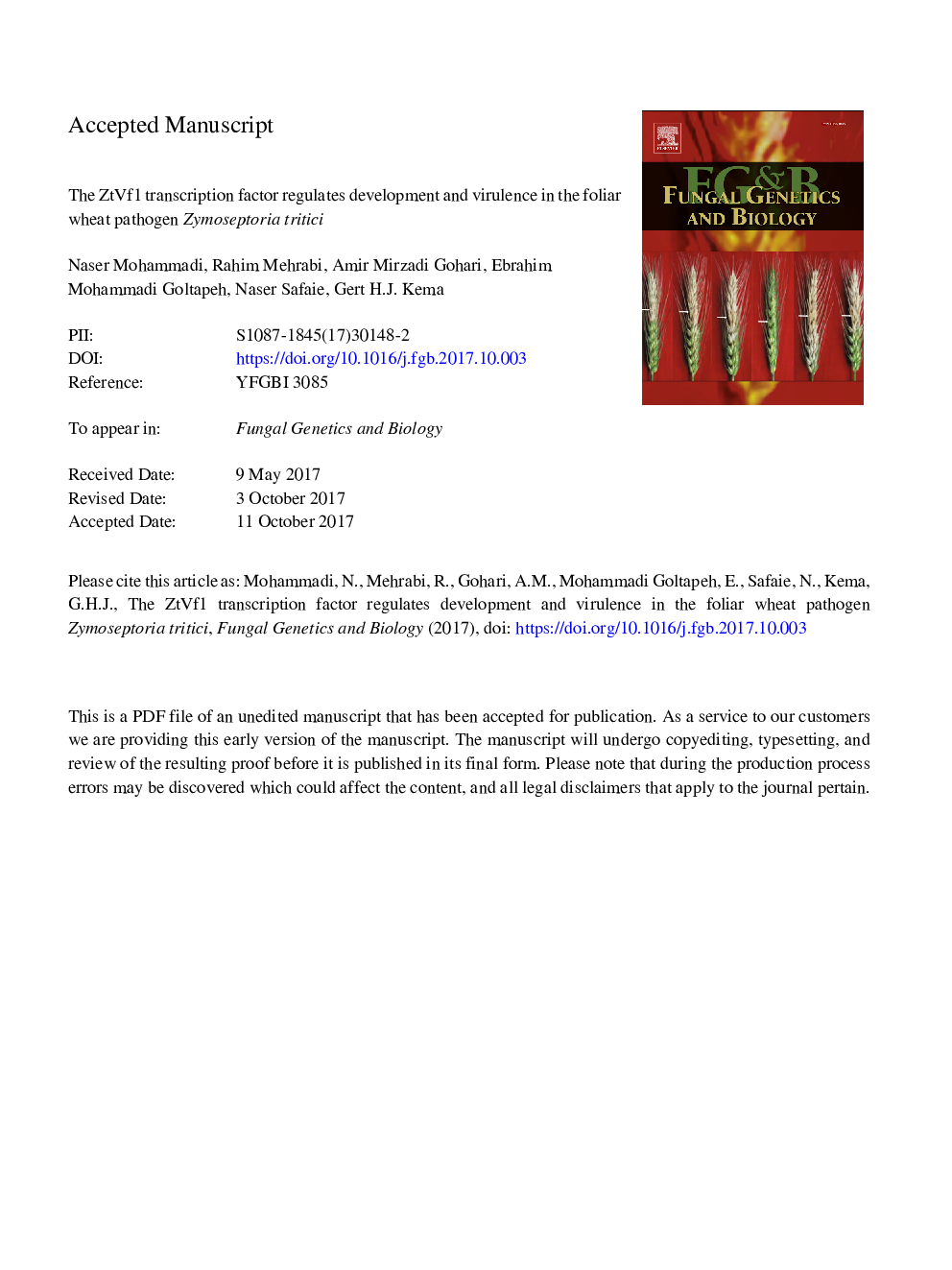| Article ID | Journal | Published Year | Pages | File Type |
|---|---|---|---|---|
| 8470472 | Fungal Genetics and Biology | 2017 | 42 Pages |
Abstract
The dimorphic fungal pathogen, Zymoseptoria tritici undergoes discrete developmental changes to complete its life cycle on wheat. Molecular mechanisms underlying morphogenesis during infection process of Z. tritici are poorly understood. In this study, we have investigated the role of ZtVf1 gene encoding a transcription factor belonging to C2-H2 subfamily. In planta assays revealed that ZtVf1 is required for virulence. Reduced necrotic lesions and low pycnidia density within the lesions resulted in significantly reduced virulence of ZtVf1 mutants. Cytological analysis showed that the impaired virulence of ZtVf1 mutants attributed to reduced penetration and colonization along with hampered pycnidia differentiation. In vitro phenotyping showed that ZtVf1 deletion affects hyphal branching and biomass production suggesting that the reduced tissue colonization by the ZtVf1 mutant might be due to lower hyphal branching and less fungal biomass production. In addition, the majority of infected substomatal cavities by the ZtVf1 mutant filled with compacted mycelia mat that did not differentiate to mature pycnidia indicating that the impaired melanization negatively affected pycnidia formation and maturation. The ZtVf1 might target multiple genes belonging to different cellular processes whose identification is of eminent interest to increase our understanding of this pathosystem. Overall, the data provided in this study indicates that attenuated pathogenicity of ZtVf1 mutant is due to involvement of this gene in the regulation of both early and late stages of infection.
Related Topics
Life Sciences
Biochemistry, Genetics and Molecular Biology
Cell Biology
Authors
Naser Mohammadi, Rahim Mehrabi, Amir Mirzadi Gohari, Ebrahim Mohammadi Goltapeh, Naser Safaie, Gert H.J. Kema,
